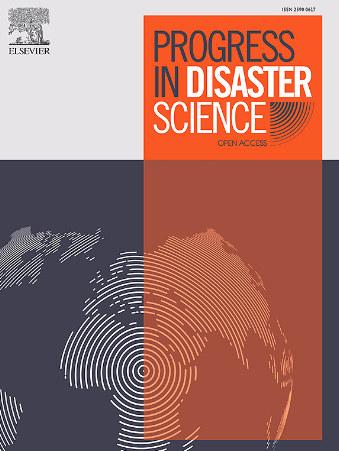Geomorphic index alterations and socioeconomic implications: A case study of a Coastal River system in Bangladesh
IF 3.8
Q3 ENVIRONMENTAL SCIENCES
引用次数: 0
Abstract
Riverbank erosion, driven by natural processes and human activities, poses significant socio-environmental challenges in Bangladesh. This study investigated the geomorphic evolution and socioeconomic impacts of riverbank erosion along the Sandhya River in Babuganj Upazila, Barishal, Bangladesh. The primary aim was to assess how natural processes and human interventions, such as sand mining and infrastructure development, have altered the river morphology and affected local communities. Landsat imagery from 1980 to 2023, with a 10-year interval, was analyzed to assess key geomorphic indices—sinuosity, channel width, widening rate, and migration rate using remote sensing, geographic information systems (GIS), and field surveys. The results indicate significant geomorphic transformation, with sinuosity varying between 1.01 and 2.08, with a post-2000 increase in channel widening (up to 27 m/year) linked to intensified sand mining and brickfield expansion. Mid-channel bar formation, absent before 2000, reached 4.0 km2 by 2023, affecting flow patterns. The widening rate shifted from a maximum of 19 m/year (1980–2000, pre-sand mining) to 27 m/year (2000–2023, post-sand mining), with a peak near Doarika Bridge, which increased the vulnerability of the Barishal Airport area, averaging 3.65 m/year. Socioeconomic surveys (n = 154) reveal severe livelihood disruption: 65 % of lost land was agricultural, 73 % of affected households migrated to urban centers, and 45 % fell into debt. The most affected areas were Dehergati, Rahamatpur, Rakudia, and Kedarpur, emphasizing the need for capacity building. The study concludes that integrated geomorphic restoration and community resilience planning are urgently needed to address erosion-driven displacement and economic vulnerability in the region.
地貌指数变化及其社会经济意义:以孟加拉国沿海河流系统为例
在自然过程和人类活动的驱动下,河岸侵蚀给孟加拉国带来了重大的社会环境挑战。本研究调查了孟加拉国巴布干吉乌帕齐拉山迪亚河沿岸地貌演变和河岸侵蚀的社会经济影响。研究的主要目的是评估自然过程和人类干预(如采砂和基础设施建设)是如何改变河流形态和影响当地社区的。利用遥感、地理信息系统(GIS)和野外调查,分析了1980 - 2023年的陆地卫星影像,以10年为间隔,评估了关键地貌指数——弯度、河道宽度、加宽率和迁移率。结果表明,地貌发生了显著的变化,弯曲度在1.01 ~ 2.08之间变化,2000年后河道拓宽增加(高达27米/年),与采砂加剧和砖田扩张有关。2000年以前没有的中间河道沙洲形成,到2023年达到4.0平方公里,影响了水流模式。扩大速率从最大值19 m/年(1980-2000年采砂前)转变为27m /年(2000-2023年采砂后),并在Doarika大桥附近达到峰值,增加了Barishal机场区域的脆弱性,平均为3.65 m/年。社会经济调查(n = 154)揭示了严重的生计中断:65%的丧失土地是农业用地,73%的受影响家庭迁移到城市中心,45%陷入债务。受影响最严重的地区是Dehergati、Rahamatpur、Rakudia和Kedarpur,这强调了能力建设的必要性。研究认为,该地区迫切需要综合地貌恢复和社区恢复力规划,以解决侵蚀驱动的流离失所和经济脆弱性问题。
本文章由计算机程序翻译,如有差异,请以英文原文为准。
求助全文
约1分钟内获得全文
求助全文
来源期刊

Progress in Disaster Science
Social Sciences-Safety Research
CiteScore
14.60
自引率
3.20%
发文量
51
审稿时长
12 weeks
期刊介绍:
Progress in Disaster Science is a Gold Open Access journal focusing on integrating research and policy in disaster research, and publishes original research papers and invited viewpoint articles on disaster risk reduction; response; emergency management and recovery.
A key part of the Journal's Publication output will see key experts invited to assess and comment on the current trends in disaster research, as well as highlight key papers.
 求助内容:
求助内容: 应助结果提醒方式:
应助结果提醒方式:


